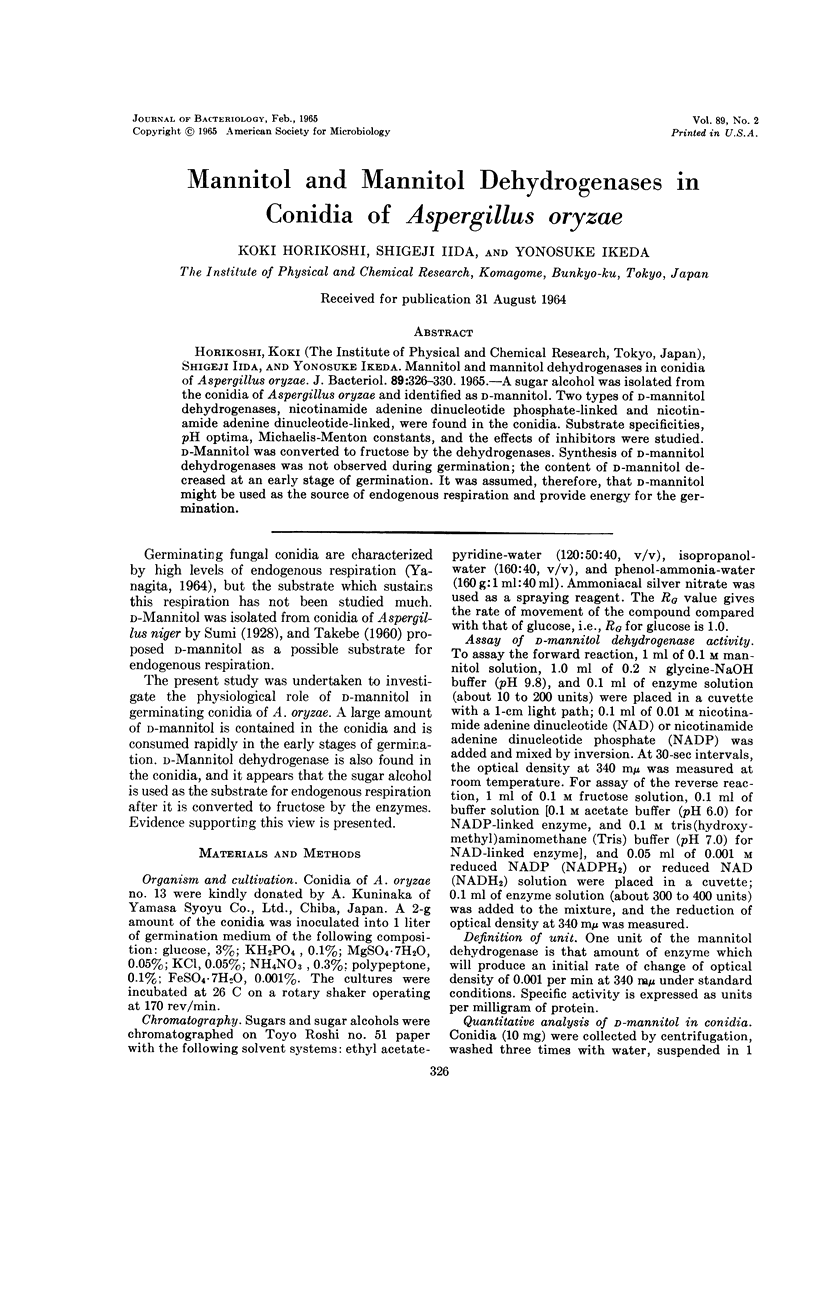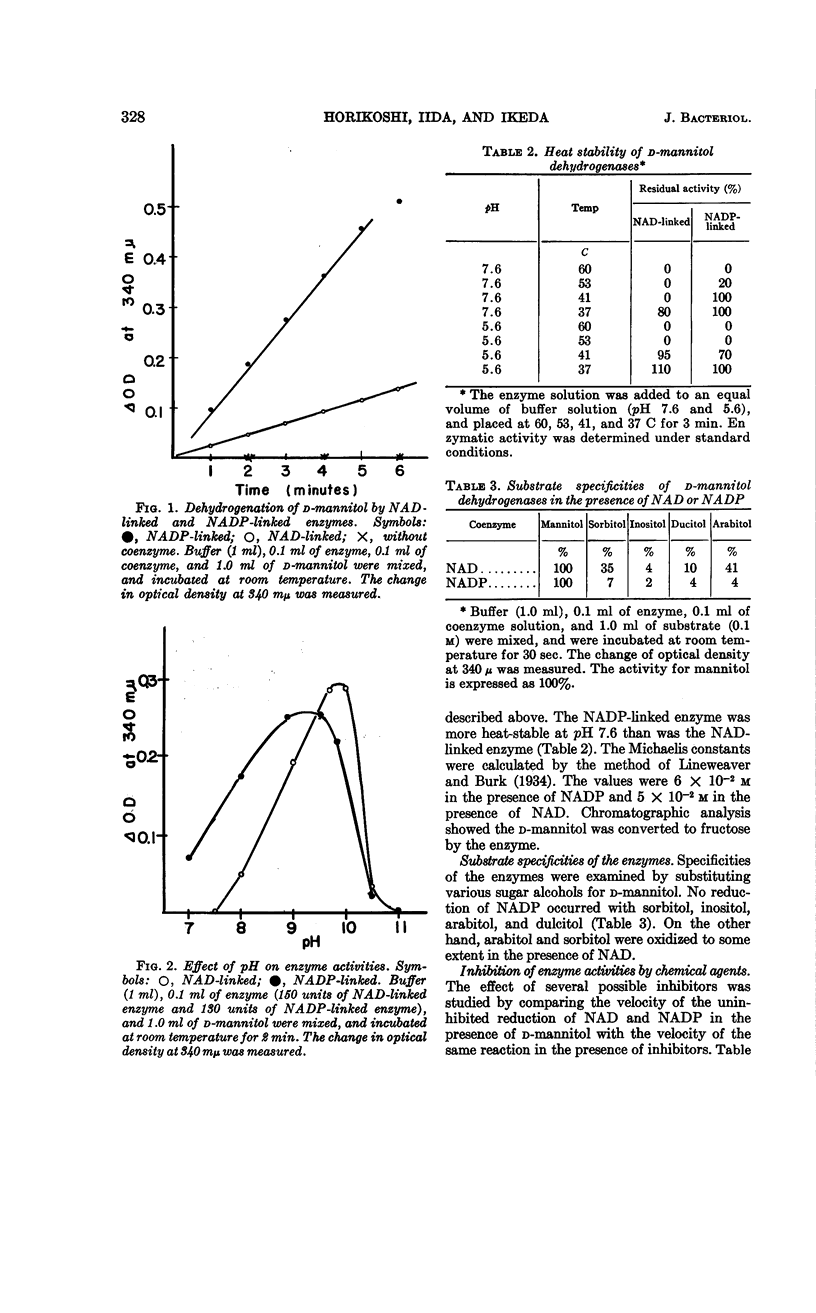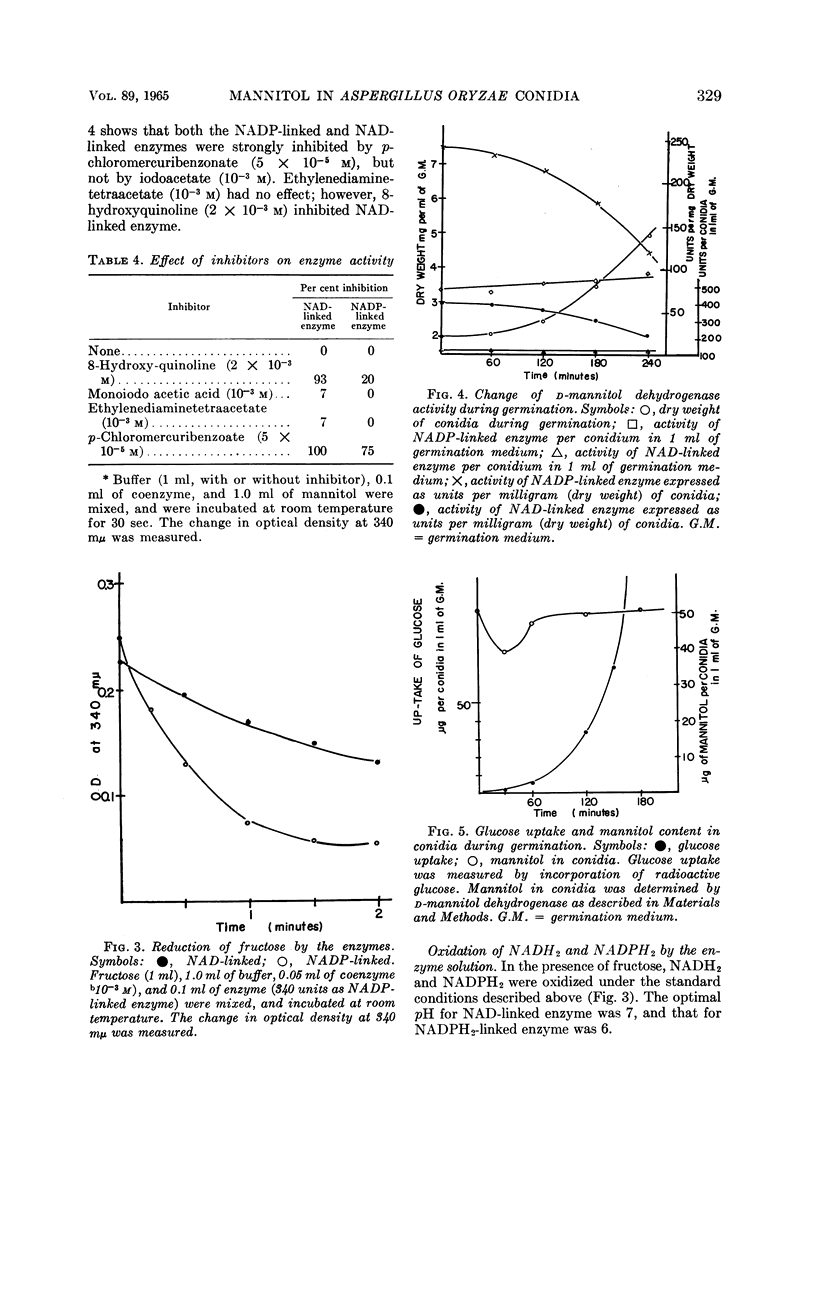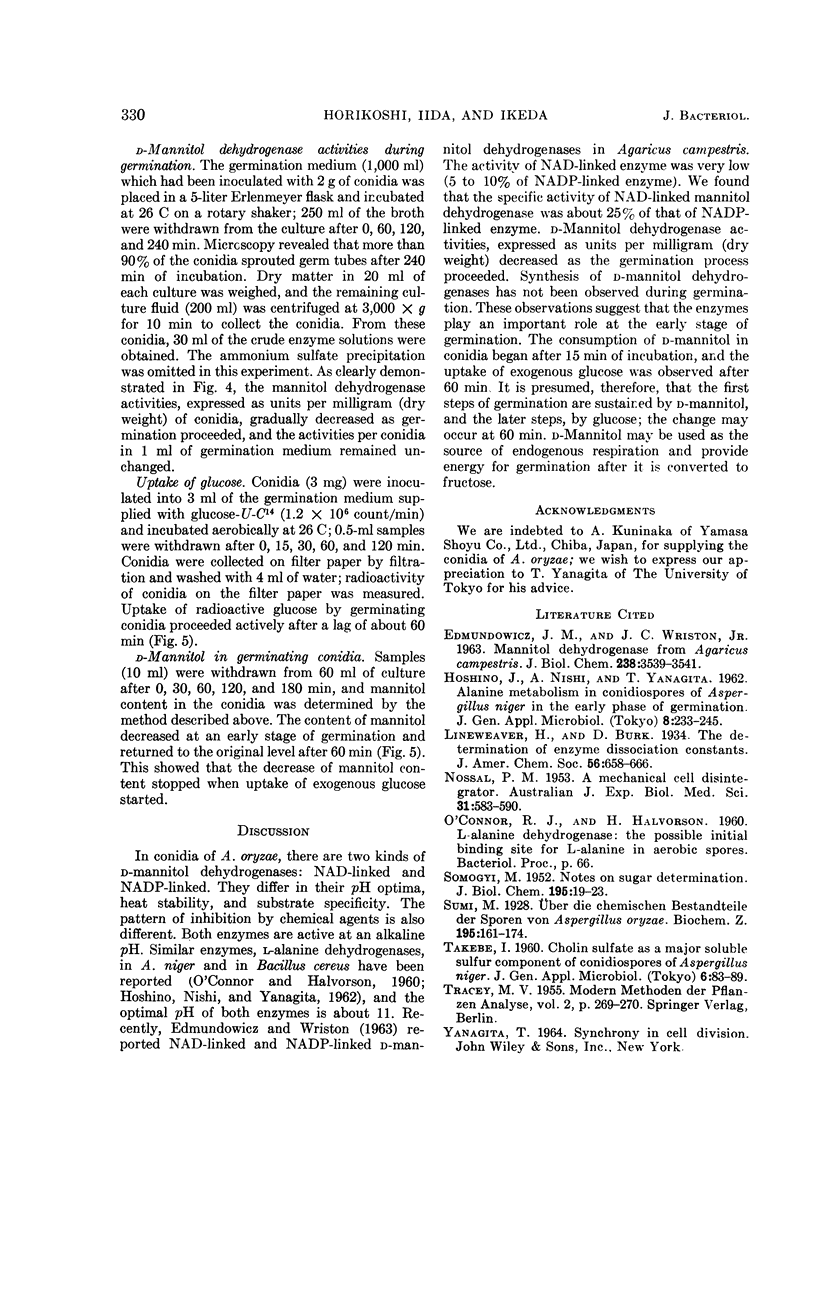Abstract
Horikoshi, Koki (The Institute of Physical and Chemical Research, Tokyo, Japan), Shigeji Iida, and Yonosuke Ikeda. Mannitol and mannitol dehydrogenases in conidia of Aspergillus oryzae. J. Bacteriol. 89:326–330. 1965.—A sugar alcohol was isolated from the conidia of Aspergillus oryzae and identified as d-mannitol. Two types of d-mannitol dehydrogenases, nicotinamide adenine dinucleotide phosphate-linked and nicotinamide adenine dinucleotide-linked, were found in the conidia. Substrate specificities, pH optima, Michaelis-Menton constants, and the effects of inhibitors were studied. d-Mannitol was converted to fructose by the dehydrogenases. Synthesis of d-mannitol dehydrogenases was not observed during germination; the content of d-mannitol decreased at an early stage of germination. It was assumed, therefore, that d-mannitol might be used as the source of endogenous respiration and provide energy for the germination.
Full text
PDF




Selected References
These references are in PubMed. This may not be the complete list of references from this article.
- EDMUNDOWICZ J. M., WRISTON J. C., Jr MANNITOL DEHYDROGENASE FROM AGARICUS CAMPESTRIS. J Biol Chem. 1963 Nov;238:3539–3541. [PubMed] [Google Scholar]
- NOSSAL P. M. A mechanical cell disintegrator. Aust J Exp Biol Med Sci. 1953 Dec;31(6):583–589. doi: 10.1038/icb.1953.64. [DOI] [PubMed] [Google Scholar]
- SMOGYI M. Notes on sugar determination. J Biol Chem. 1952 Mar;195(1):19–23. [PubMed] [Google Scholar]


